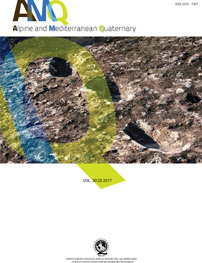Can it be an actual human fossil footprint? the "Combined Method" helps to give an ansie
Main Article Content
Abstract
Recent technological improvements and the growing precision of surveys and analytical procedures together with the growing interest in hominid palaeoichnological traces demand verification of all track-like impressions, especially those which are supposedly human. Strict analysis and objective interpretations are increasingly necessary for those hollows which have been too hastily recorded as actual human footprints. In some specific environments, such as quarries or other archaeological sites which have been and are still being continuously altered by natural agents (such as eustatic movements, or weathering/aeolian phenomena, or geochemical processes), the number of structures which mimic the shape of human footprints is incredibly high and can lead to false interpretations. Here we try to improve a successfully used method to re-analyze and reject the actuality of the supposed human fossil footprints from the Valsequillo basin (Mexico) by combining it with well-known and tested forensic methods of gait analysis. We think the new method that we are calling Combined Method (CM), enables scientists to gain a better understanding of wether a hollow on the ground can actually be a human footprint or not, even in cases where not all its contour details or anatomical landmarks are preserved or recognizable.
Article Details
Issue
Section

This work is licensed under a Creative Commons Attribution-NonCommercial-NoDerivatives 4.0 International License.
The Author grants usage rights to others using an open license (Creative Commons or equivalent) allowing for immediate free access to the work and permitting any user to read, download, copy, distribute, print, search, or link to the full texts of articles, crawl them for indexing, pass them as data to software, or use them for any other lawful purpose.

